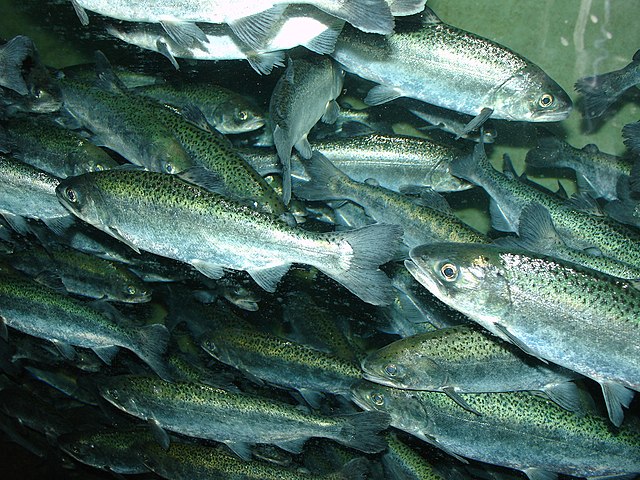The culminating Pacific salmon harvest in Alaska had scored 185 million fish by September 9, 2025, nearing the season’s landings target.
According to the Alaska Department of Fish and Game (ADFG), total deliveries of five Pacific species crossed 80% of seasonal projections.
With only a fortnight till the main season fades out, the species quintet added a cumulative 4 million pounds, week-on-week.
Pink salmon garnered 109 million count, sockeye 52 million, keta 17 million, coho 1.7 million and chinook 165,000 fish.
Leader pink salmon is notably down by 24% from the 2023 tally, despite 2025 being an odd year when harvests rise. The species normally recycles every two years, the last of which in 2023.
Currently at below 112 million fish, the statewide pink haul looks likely to hit the ADFG target of 138.4 million fish.
In its May 13, 2025 forecast, the fisheries department projected pinks to reclaim the landings lead they narrowly lost to sockeye in 2024.
Kodiak Takes Pinks Higher, other Species Promising
Southeast Alaska and other areas have all recorded a downward curve in pink salmon catches vis-á-vis 2023, apart from Kodiak.
Kodiak, the largest island in Alaska, had by September 9 registered a 36% rise in its pink salmon catch above 2023’s.
The count could have increased but for an engine oil spill that shut the local Afognak fishery on September 1.
Despite the spill, Kodiak expects its second or third biggest pink catch ever, per James Jackson, an ADFG area management biologist.
For runner-up sockeye, statewide projections are at 52.9 million fish – and 90% of that catch has already reached the shores.
Alaska’s sockeye rates held well in retail markets before July 11, 2025 at between $15.99 and $56.95 a pound.
Keta in turn already boasts landings at 13% above 2024’s, via robust landings in the Prince William Sound in southern Alaska.
However, the keta harvest has been declining since peaking in week 28, unlike other years when revamps succeeded declines.
For coho, there is still time as its season runs till October in comparison with pink and sockeye which apex in late August.
Overall, the Alaska Pacific salmon season normally attains its finest hour between mid-May and September. The statistics below examine other facts about this important fishery.
Alaska Pacific Salmon Statistics
Alaska is one of the important sources of salmon in the United States from an area other than aquaculture. The main fishery is the Pacific coast and the adjacent rivers, hence the use of the term Pacific salmon.
The fishery is important commercially due to high unit prices that convert into economic returns. In 2022, Pacific salmon (coho, sockeye, chinook and pink) landings earned the state $690,151,546. According to the National Oceanic and Atmospheric Administration (NOAA), the catch value then halved to $367,996,302 in 2023. A year later in 2024, the value dipped to $318,601,639.
How big is the Pacific salmon production volume in tonnes?
In the five-year period ending 2024, Alaska’s joint chinook, pink, coho and sockeye salmon production volume fluctuated as follows:
2024: 140,241 t.
2023: 329,246 t.
2022: 277,160 t.
2021: 337,540 t.
2020: 201,880 t.
How much is Alaska’s Pacific salmon count by leading species?
Seasonal highlights by the Alaska Department of Fisheries Department (AFDG) put pink and sockeye as the leading Pacific species. In 2024, pinks finished at 40 million fish behind sockeye at 42.2 million. In 2025, projections put pinks at 138.4 million units while sockeye at 52.9 million fish. The discrepancy in pinks is because they revamp each two years, with one year producing only a fraction of the next.
